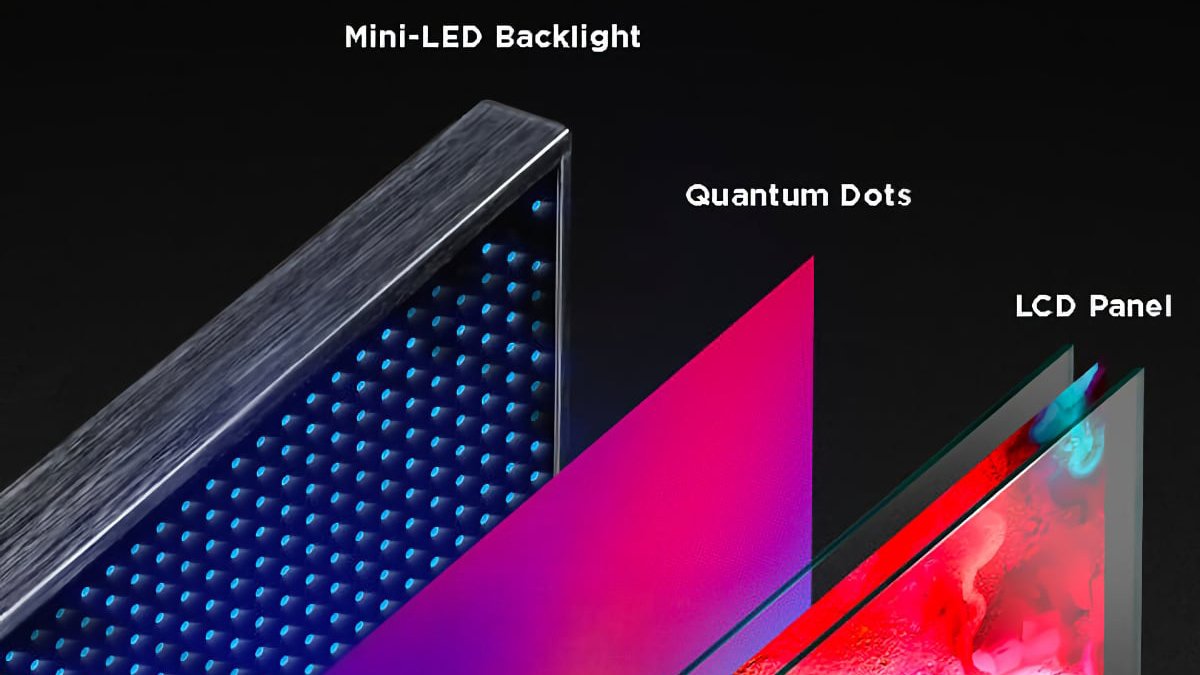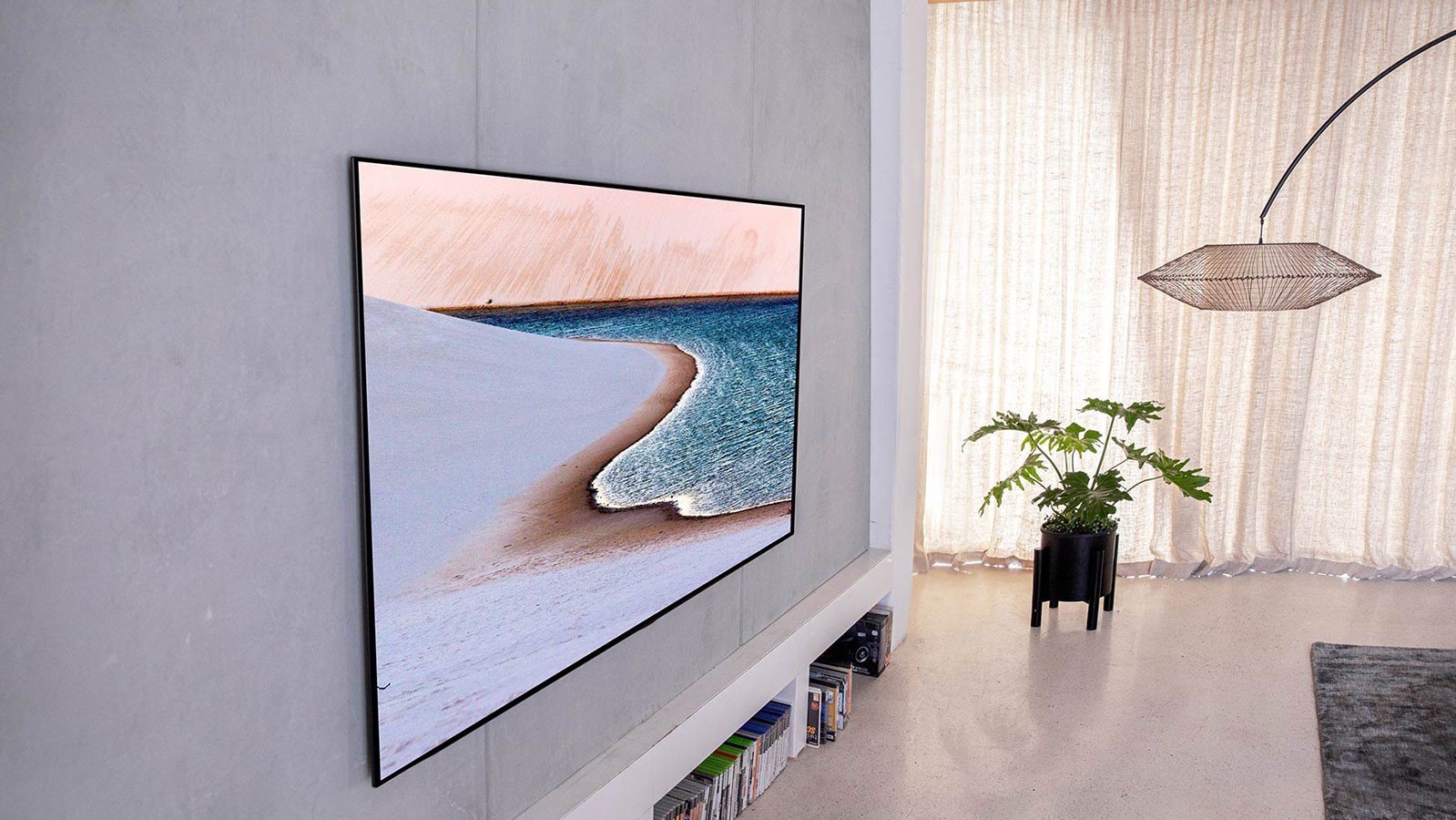
Mini LED is the next big thing in TV technology. But how does it compare to the current king of high-end TVs, OLED?
Mini LED is the culmination of decades of development and advancement, and the latest evolution in LCD display technology. Many major TV brands including Hisense, LG, Samsung, Sony and TCL will launch Mini LED TVs in 2022.
Confusingly, most have different names for their Mini LED ranges. For example, Samsung's version is called Neo QLED, while LG labels its mini LED TVs as QNED.
However, Mini LED is a transmission technology based on LCD panels, and the "LED" bit only refers to the type of backlight used. This means that the inherent defects of the LCD screen are still there. Don't confuse it with Micro LED, which is a totally different proposition and is reserved for only the biggest and most expensive screens you can buy today. You can read more about this in our Micro LED guide.
For an in-depth look at both types of TV technology, check out our full What Is Mini LED guide and our What Is OLED guide, as well as our picks for the best OLED TVs.
Below we will explore the main differences between Mini LED and OLED. We will find out if the Mini LED excels in brightness, contrast, HDR performance and response.
Mini LED vs OLED: lighting per pixel
The main advantage of OLED is its illumination per pixel. OLED is a self-emitting technology, which means that each pixel is its own light source, allowing full control over brightness and contrast.
While Mini LED is meant to dramatically improve LCD TV backlight control, it works a little differently than OLED. The upcoming Mini LED TVs are expected to have up to 3000 lighting zones. It's a big improvement over existing LCD TVs, but it still involves relatively low resolution control over lighting and contrast. By comparison, OLED's illumination per pixel means that a 4K set effectively has more than eight million zones.
Think about it. Imagine the entire screen completely black except for a single bright, pure white eight million pixel, because that's totally doable on an OLED. On a Mini LED matrix, it's not even close: on a 4K panel with around 3000 lighting zones, each backlight zone would actually output around 2700 pixels.
In other words, precision lighting for highly detailed objects will not yet be possible with Mini LED. At least not with a Mini LED implementation that has been revealed so far. And that means the Mini LED's HDR performance will be compromised. As we'll see, maximum brightness won't be a problem for Mini LED, but it won't be possible to completely eradicate artifacts like glowing halos around dark objects either.
Winner: OLED, by some distance

Mini LED vs OLED: Brightness
OLED TVs aren't that bright. The traditional answer is that they don't need to be, thanks to the inherently high contrast. Since OLED can achieve essentially perfect black levels, the dynamic difference or contrast between light and dark pixels is spectacular.
OLED brightness has increased in recent years. LG has improved its panels. Read our LG G1 OLED review for a display with 412 nits of brightness. Sony claims that its new OLED panel can hit 1300 nits, but that's only in a very short period of time on a small part of the panel.
Most existing OLED panels typically achieve 200 nits of sustained brightness across the entire panel, while the brightest LED-backlit LCD TVs can sustain up to 800 nits across the entire panel.
Mini LED only promises to widen this gap. Until proven otherwise, it's an easy win for Mini LED. But remember that pure brightness isn't the only important metric for HDR performance and contrast.
Winner: Mini LED is much brighter

Mini LED vs OLED: viewing angles
The very name Mini LED is a bit of a misnomer. Mini LED TVs are simply the latest version of the LCD screen, only with a more advanced backlight. The basic approach of shining light through an array of liquid crystal cells remains, and with it the same built-in limitations, including loss of color control when viewing the panel off-axis.
OLED panels are absolutely perfect when it comes to viewing angles. But as a self-emissive technology where the light is generated by the pixel itself, OLED has significantly better viewing angles than any LCD technology, including Mini LED.
Winner: OLED, unequivocal
Mini LED vs OLED: speed and response
There are two fundamental problems here. One is the delay, called lag or latency, between the output of video data from a device (such as a console, PC, or set-top box) and a viewable image on a given screen. The other is the time it takes for the pixels to respond to the new image data and change state.
The first is a factor in several issues, many of which are not directly related to panel type, including image processing and refresh rates. It's somewhat circumstantial, but for now the fastest displays in terms of latency are LCD panels, although these are usually gaming monitors rather than necessarily TVs.
On the other hand, OLED technology has an inherent response advantage. This is because the image update on an LCD panel involves the movement of crystals in response to an electrical charge. This process has accelerated in recent years. But it still takes time.
This makes choosing Mini LED or OLED for gaming tricky. The best high refresh Mini LED displays will have lower latency, but OLED panels offer superior pixel response.
Winner: tie, depends on metric

Mini LED vs OLED: color accuracy
OLED once ruled this category, but by improving the purity of the backlight, quantum dots have allowed LED TVs to increase color accuracy, color brightness, and color volume, putting them on par with TVs. OLED.
Those looking for TVs with Wide Color Gamut or HDR will find OLED and LED TV models that support these features. OLED's better contrast ratio will give it a slight advantage in terms of HDR when viewing in dark rooms, but HDR on a high-end LED TV screen has an advantage because it can produce well-saturated colors at extreme brightness levels than OLED. can. It matches quite a bit.
Winner: Draw
Mini LED vs OLED: resistance and reliability
Mini LED is a new technology, but only to the scale of its implementation. It's the same LED technology as other LCD panels, only with more and smaller LEDs. That means endurance and reliability shouldn't be an issue.
This is not the case with OLED. The 'O' in OLED, of course, stands for organic, which is where the problems start. In short, OLED panels are made up of tiny red, green, and blue organic LEDs. Unfortunately, blue LEDs degrade faster than others. Over time, this can change the color balance of individual pixels. This tends to happen faster when a persistent image is displayed, such as an operating system menu. The result can be an "etching" in which a ghostly shadow of the afterimage remains even when something completely different is displayed.
However, OLED burn-in can be mitigated by various measures and is not a big problem for the latest OLED sets. But the fact is that OLED technology is less robust than conventional non-organic LED backlights.
Winner: Mini LED

Mini LED vs OLED: price
Until now, OLED sets have clearly been the more expensive option. That is why they have not extended their reach to the entire market and are still the premium option.
However, the latest 10th generation OLED substrates are the cheapest to date. Meanwhile, Mini LED implementations are more complex and more expensive than any previous LCD backlight technology. Some industry analysts believe that Mini LED panels are so complex to manufacture that they are only XNUMX% cheaper than existing OLED displays. Throw in those cheaper XNUMXth generation OLED panels and the result could be very close in price.
Winner: Draw, so far
Conclusion
This is the beginning of Mini LEDs. TCL was quickly knocked off the blocks with Mini LED TVs, but newer TVs like LG and Samsung are packing a lot more lighting areas. It remains to be seen how many zones are needed to reduce issues like halos and blooming to the point where they are no longer visible to most users.
Similarly, we don't know how much brighter or cheaper the incoming eighth-generation OLED panels will be. But on a balance of probabilities, OLED's per-pixel nature will likely give it the upper hand in the end.
The best deals on Sony Bravia A8 OLED (65-inch), LG CX OLED and Samsung Q800T 8K QLED 65-inch TVs